A few weeks ago, in Alto Adige, Care’s – the ethical chef days took place. The event was designed by Norbert Niederkofler and Paolo Ferretti, «in 2016 with the goal of curating and taking care of the environment, of local communities and of the rhythms of nature». A festival, we've often said, that wants to promote an ethical and sustainable approach to cooking. In its creators' intentions, it's not just a meeting point where people can debate on noble themes in a sterile way. It is a place that can extend its principles on a global social and economic scale.
Having an impact on a global level means, first of all, taking care of the infinitely small. The fact that the smallest details are coherent with the overall philosophy is something that struck us, on our first visit to the event – a festival that this year was a little affected by the emergency, which caused some absences and the use of masks and social distancing among participants.
There was indeed attention in selecting the chefs. Like Chiara Pavan and Francesco Brutto, for instance, who are turning inside out like a glove the appearance of Venissa (we'll return on this). There was attention in the choice of international speakers who spoke via zoom, from Yvon Chouinard the founder of "clothing and equipment brand Patagonia («I'm not an inventor», he explained live from Wyoming, «but an innovator. That is, I always wonder: ‘how can I make this object better than how it is?’»).
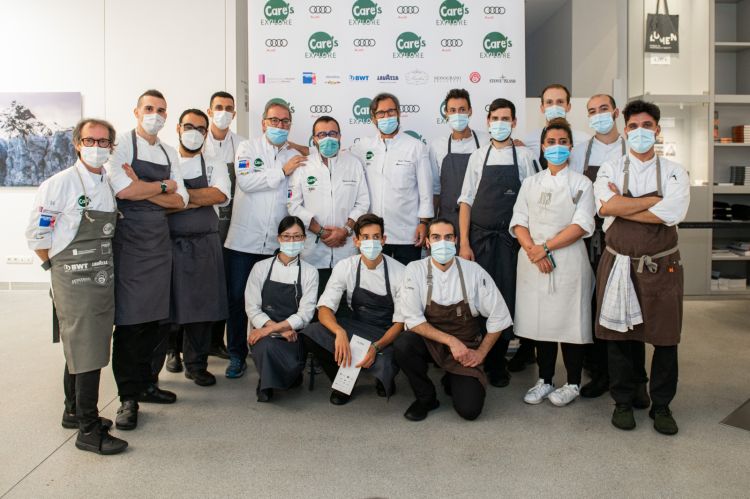
In the group photo, Diego Crosara, Giancarlo Morelli and Carlo Cracco
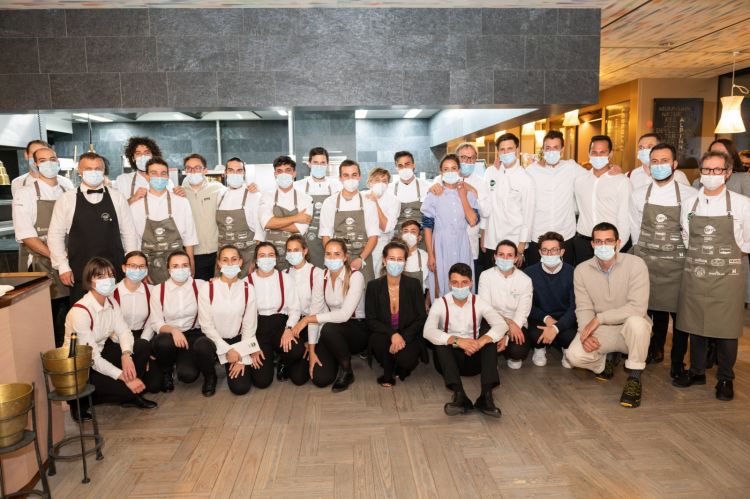
In the middle, Antonia Klugmann and Paolo Griffa
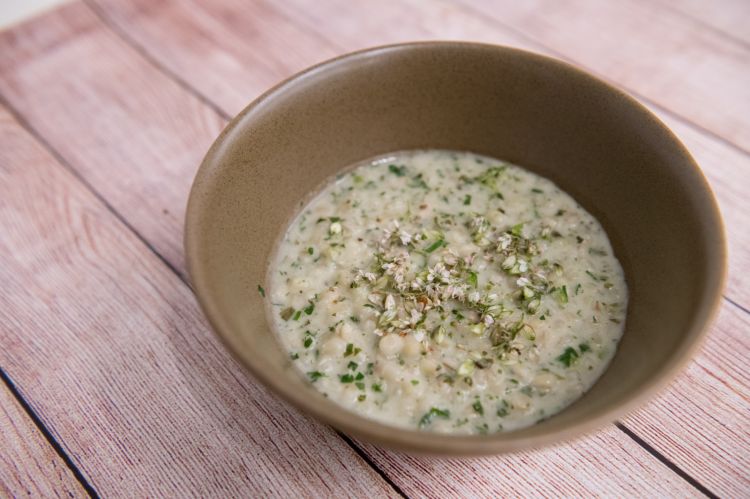
Orzotto with mountain herbs from Niederkofler/Lazzarini
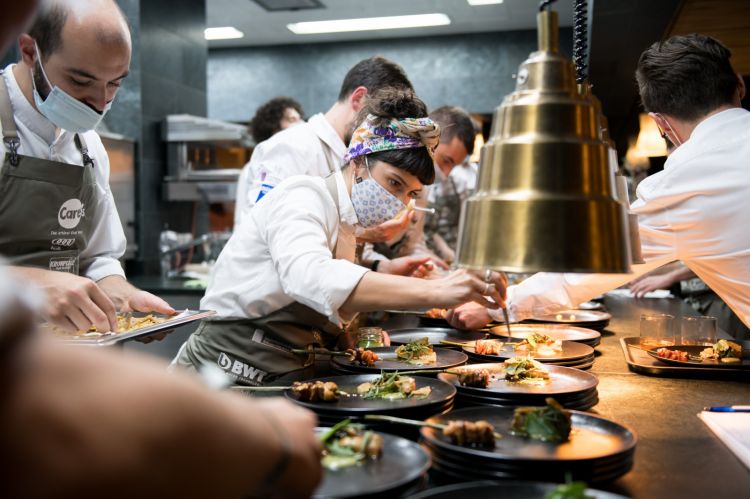
Chiara Pavan, in Alto Adige with partner and colleague Francesco Brutto
Then
Manu Buffara from Curitiba, who every morning wakes up with a question in mind like «How can I dispose of my waste today? How can I avoid wasting running water?». There was attention in the choice of the dishes prepared during the multiple-hand dinners, such as with the
Trout meuniere served by the sous chef of
St.Hubertus Michele Lazzarini on the Friday: instead of lemons, he used fermented plums because his boss's philosophy doesn't allow the use of citrus fruits in the kitchen. And there was also attention in the choice of the partners: pasta producer
Felicetti presented his fusilli closed in a pack made only of paper, a choice that affects the product's transparency but gets rid of the plastic.
There was awareness also in every page of “Cook the mountain – the nature around you”, the book presented by
Niederkofler after we anticipated its content
a few weeks ago. And even in the water in the panels above the tables at restaurant
AlpInn, the much photographed setting of the dinners in Plan de Corones, which you can reach by cable car. We've asked
Norbert, a chef who has the destiny of the next generations at heart, and not only in words, to tell us about them.
THE BOOK. «The book is in two volumes: a coffee table book and a cookbook which you can follow from a bookstand. It illustrates the evolution of the
Cook the mountain philosophy, from 2008 to our days. It also includes all the limits we've imposed to ourselves: don't use vegetables that come from greenhouses, citrus fruits, olive oil, vacuum cooking, plastic… Respect for animals, of which we always use every part, including the poorer ones. The first thing we did before writing was to spend two months reading 1'500 books on cooking, all those in my personal library. We wanted to draw inspiration from the books we like and, most of all, understand what to avoid.
Alex Moling took 16'000 photos and we chose the best. We handed the cooking part to
Michele Lazzarini, all the content was written with
Christine, my wife. It describes all the stories of the artisans with whom we work, including that of our butcher, who always dreamt of becoming a vet…».
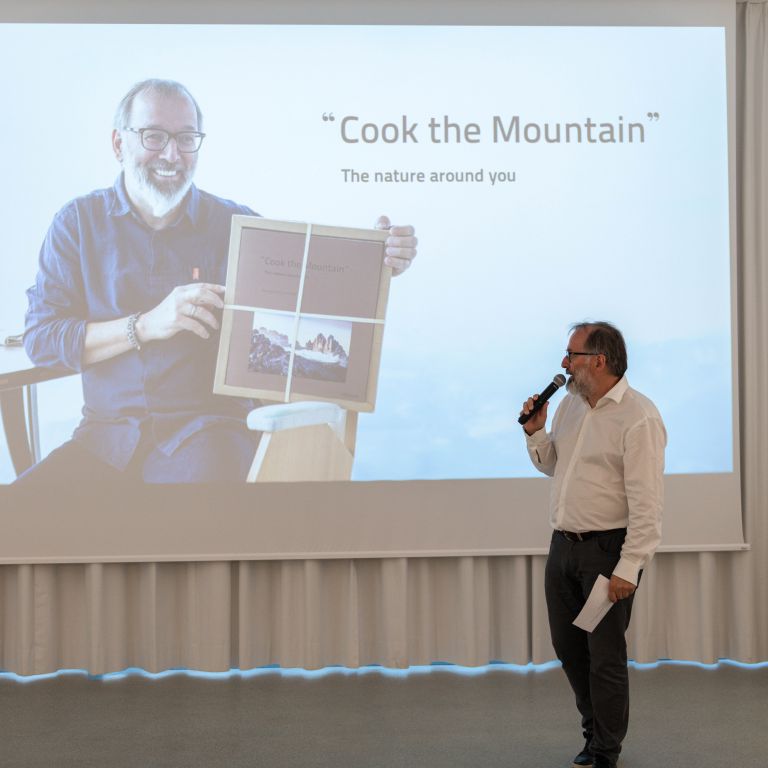
Niederkofler presents his book
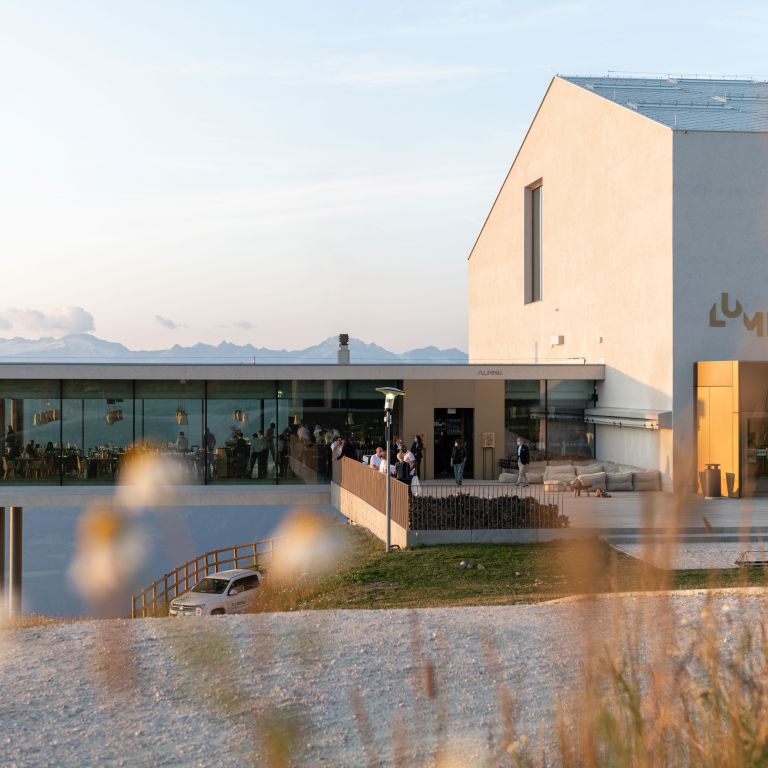
A first dash of snow over restaurant AlpInn in Kronplatz
ALPINN. «The idea of AlpiInn was born in 2015. Initially, the owners of the funicular railway in Brunico meant to place here an archive of all the mountain photography from Tyrol. At Expo Milano they were instead charmed by the futuristic pavilion of Azerbaijan and they changed their mind. They asked me to create a restaurant not too far from Zaha Hadid's Messner Mountain Museum Corones. I agreed, as long as I could choose the designer. I suggested Martino Gamper, and they accepted. I asked him to apply the philosophy of Cook the Mountain to the architectural project. The panels on the ceiling, for instance, were painted with a Japanese technique that doesn’t pollute water: it's 330 square metres and each metre is different. Among these, there are 220 square metres of rails with hooks on which lamps made with pig bladders move. The tables are all in solid maple wood; the floors are made of larch from Valle Aurina [where Niederkofler was born] with dovetail joints, like in the old days. I can tell you the artisan who conceived every object, whether it's edible or not».
The beverages at AlpInn: «We don't serve Coca Cola or Fanta, but only juices from Alto Adige. For the water I had two options: bring here 35K bottles with a lorry at 2.265 metres, or filter the spring water. I chose the latter solution, using the filtering treatment from Best Water Technology: we sell it for 50 cents per litre. Even the waste disposal system is clean. So much so that as of next year we will take care of the waste disposal for the entire Plan de Corones. In the last season we served 25K guests, 150 per day, opening only at lunchtime». Sustainability and success. Where does Niederkofler find the time to do all this? «I sleep little, and when I sleep, I sleep fast».
Translated into English by Slawka G. Scarso